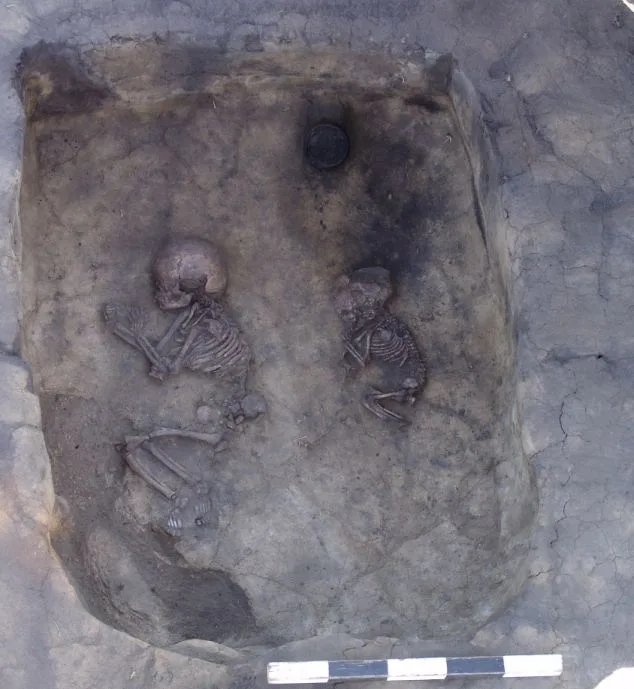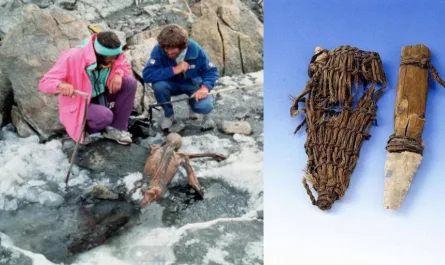In Siberia’s Staryi Tartas village, Russian archaeologists are unraveling the mysteries of 3,500-year-old Bronze Age burials where couples were interred in an apparent embrace, raising questions about love, ritual, and sacrifice. These discoveries, reported by The Siberian Times, involve approximately 600 tombs from the Andronovo culture, with dozens containing male and female skeletons facing each other, their hands clasped as if bound for eternity. The poignant imagery of these “post-mortal hugs,” as described by writer Vasiliy Labetskiy, has left researchers searching for answers, with DNA analysis expected to shed light on these enigmatic burials.
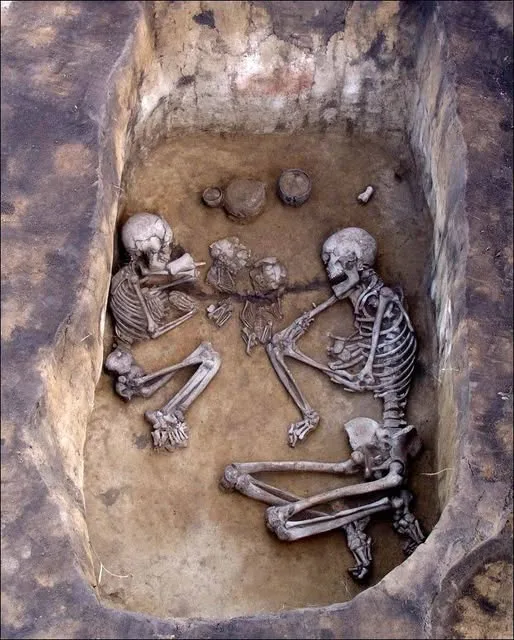
The graves, located in western Siberia’s Novosibirsk region, present various configurations: some feature adult couples, while others include adults buried alongside children. Professor Vyacheslav Molodin, director of research at the Institute of Archeology and Ethnography of the Siberian branch of the Russian Academy of Sciences, highlights the complexity of interpreting these finds. One hypothesis suggests these burials reflect the emergence of the nuclear family unit. However, darker theories propose that after a man’s death, his wife may have been killed to accompany him in the grave, a practice seen in some ancient cultures like the Scythians. Another possibility is that the graves were left open for a period, allowing additional burials, or that the deaths were simultaneous. A particularly striking theory posits that some couples were deliberately positioned to mimic a sexual act, potentially involving the sacrifice of a young woman to fulfill a ritual role in death.
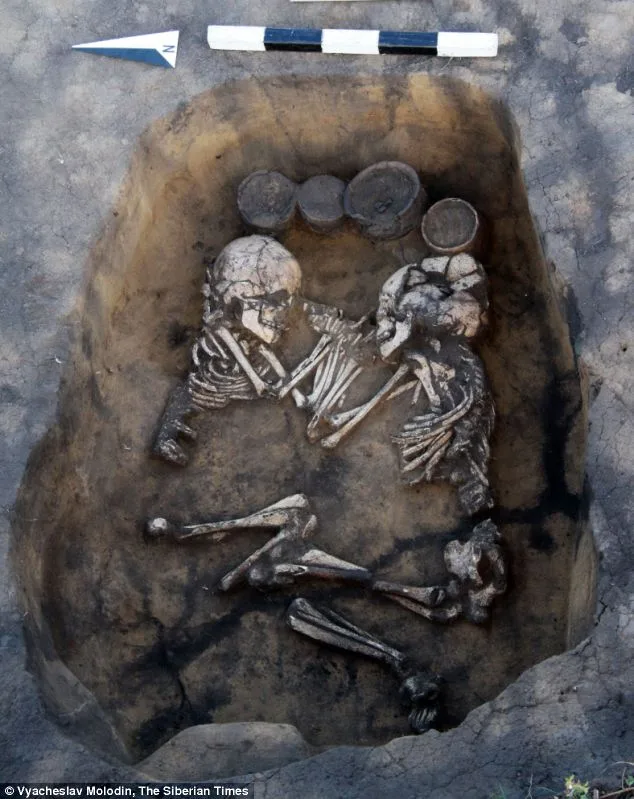
The burials also include adults interred with children, which raises further questions about kinship. While a woman and child might intuitively suggest a mother-child relationship, Professor Molodin cautions that the woman could be an aunt or unrelated. To resolve these uncertainties, researchers are turning to paleogenetics, collaborating with the Institute of Cytology and Genetics to analyze DNA and determine familial ties. Such analyses are costly and require specialized expertise, but they are critical to understanding the relationships between the individuals in these graves.
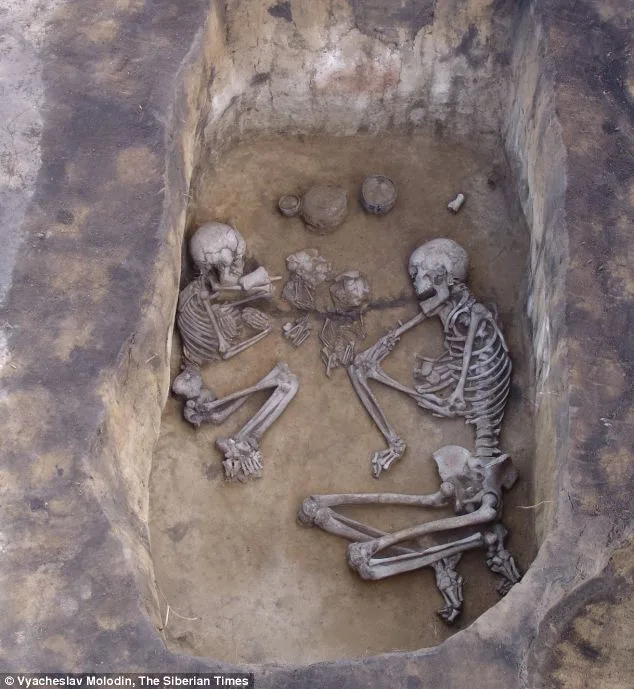
Professor Lev Klein from St Petersburg State University offers a compelling hypothesis linking the burials to ancient reincarnation beliefs, possibly influenced by early Hindu rituals from the Indian subcontinent during the composition of the oldest Vedic texts. Klein suggests that some burials may reflect a ritual known as deeksha, where a man offered his body as a sacrifice to the gods in a symbolic “second birth.” This ritual could involve a posthumous simulation of a sexual act to ensure spiritual continuity, potentially requiring the sacrifice of a woman or girl to complete the rite. While Professor Molodin acknowledges this as a plausible hypothesis, he emphasizes that it remains speculative and requires further investigation.
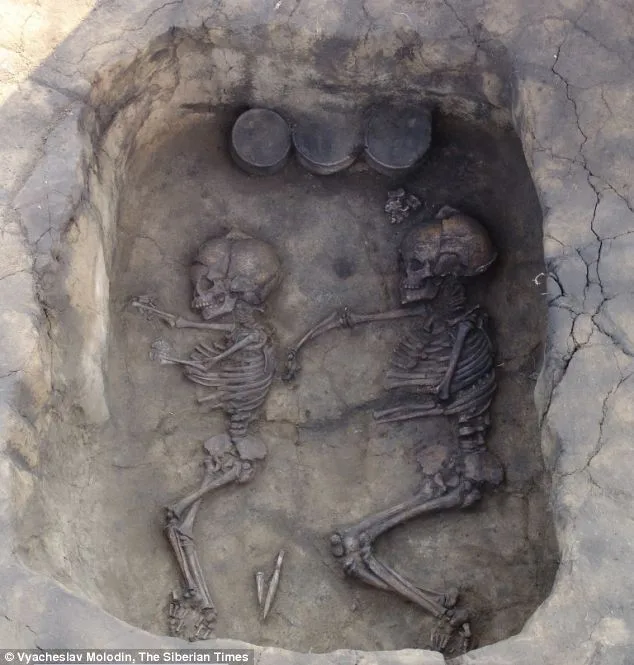
The Andronovo culture, believed by some scholars to be linked to ancient Iranian populations, adds another layer of intrigue. If Klein’s theory holds, these practices could reflect cultural exchanges across vast regions. However, until DNA results and further studies provide concrete evidence, the true nature of these tenderly arranged burials—whether rooted in love, ritual, or sacrifice—remains one of Siberia’s enduring mysteries.
